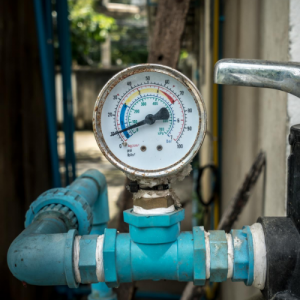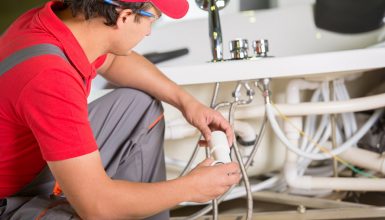The content which follows pertaining to 10 Reasons for Low Water Pressure in Your House is truly engaging. You should look it over.

Low water stress in your house can be a discouraging trouble, affecting whatever from bathing to cleaning meals. If you're experiencing weak water flow, there are a number of possible reasons and options to check out. In this overview, we'll review usual reasons for low tide stress and functional steps to resolve the issue efficiently.
Intro to Low Tide Stress
Low water pressure happens when the circulation of water from your taps, showers, and other components is weak than typical. This can make daily jobs more difficult and less effective. Understanding the reasons for low tide pressure is vital to locating the right service.
Common Reasons For Low Water Stress
Faulty Pressure Regulatory Authorities
Stress regulatory authorities are accountable for maintaining regular water stress in your home. If they malfunction, it can lead to low water stress or unequal flow throughout the house.
Municipal Water Supply Issues
Sometimes, the trouble lies outside your home. Community supply of water concerns, such as main line leakages or maintenance work, can temporarily minimize water stress in your location.
Pipeline Obstructions
Over time, pipes can become obstructed with mineral deposits, sediment, or particles, limiting the circulation of water. This is a common problem in older homes with galvanized steel pipes.
Rust
Rust within pipes can bring about leakages and minimized water pressure. Corrosion buildup can constrict water circulation, specifically in maturing plumbing systems.
How to Identify Low Water Pressure
Inspecting Pipelines
Examine visible pipelines for signs of leaks, deterioration, or obstructions. Pay attention to any type of uncommon audios, such as knocking or rattling pipelines, which could suggest issues within the plumbing system.
Consulting with a Plumber
If you're incapable to pinpoint the source of low water pressure, think about hiring a specialist plumber to carry out an extensive assessment. They can recognize underlying concerns and suggest ideal remedies.
Inspecting Taps and Fixtures
Begin by examining the water pressure at different faucets and components throughout your home. If the concern is isolated to specific areas, it might suggest local issues.
Do It Yourself Solutions to Fix Low Tide Stress
Flushing Hot Water Heater
Debris accumulation in the water heater can restrict flow and minimize efficiency. Purging the tank regularly assists remove sediment and preserve optimal performance.
Checking Pressure Regulatory Authority
Make sure that the stress regulatory authority is operating appropriately. Readjusting or changing the regulatory authority can assist bring back appropriate water stress throughout your home.
Cleansing Aerators and Showerheads
Natural resources can gather in aerators and showerheads, reducing water circulation. Remove and clean these parts routinely to enhance water stress.
Cleaning Clogs in Pipeline
For small clogs, attempt using a plumbing snake or chemical drainpipe cleaner to clear obstructions in pipes. Be cautious when using chemicals and adhere to safety and security standards.
When to Call a Specialist Plumber
If do it yourself initiatives stop working to deal with the issue or if you suspect substantial plumbing problems, it's ideal to look for assistance from a qualified plumber. They have the knowledge and tools to address complicated problems safely and properly.
Safety Nets to Preserve Water Pressure
Installing a Stress Booster
Take into consideration mounting a pressure booster pump to boost water pressure in areas with constantly low circulation. This can be specifically valuable for multi-story homes or residential properties with high-demand fixtures.
Surveillance Water Usage
Bear in mind water use habits and avoid overtaxing the plumbing system. Simple adjustments, such as shocking showers and laundry lots, can aid maintain ample water pressure.
Normal Upkeep
Schedule routine upkeep for your plumbing system to prevent issues such as rust, leaks, and obstructions. Attending to minor problems early can help avoid even more substantial fixings in the future.
Verdict
Managing low water stress can be discouraging, but recognizing the underlying causes and executing suitable remedies can recover optimal flow throughout your home. Whether it's cleaning up aerators, examining pipelines, or consulting with a plumber, taking aggressive actions can ensure a consistent supply of water for your day-to-day demands.
FOUR WAYS TO FIX LOW WATER PRESSURE NOW
Turning on a shower or faucet only to find the water comes out in a sad, slow drizzle is never a good feeling. How exactly are you supposed to wash a pan or take a quick shower when it takes 10 minutes just to rinse off a little soap? The good news is that when your water pressure is bad, there's always a cause: typically one that can be easily fixed. Here are some of the most common causes of low pressure and what you can do to fix the issue:
DEBRIS AND MINERAL DEPOSIT BUILDUPS
If you notice low water pressure from just one or two of the fixtures in your house, the problem likely has to do with debris buildup. Water is full of minerals and other debris, all of which can accumulate in your pipes and on your fixtures. This can cause a blockage that affects how much water flows through. To fix this, try filling a small plastic bag with white vinegar, and use a rubber band to hang it around your showerhead or faucet. Let the head of the fixture soak for a few hours, and the vinegar should loosen the deposits.
WATER LEAKS
Leaks are another common cause of low water pressure. If water is flowing out of your plumbing through a hole or crack before it can reach your fixture, the pressure coming out of the faucet or showerhead will be lower. A plumbing professional is your best bet for finding and repairing a leak in your water supply pipes.
Leaks are another common cause of low water pressure. If water is flowing out of your plumbing through a hole or crack before it can reach your fixture, the pressure coming out of the faucet or showerhead will be lower. A plumbing professional is your best bet for finding and repairing a leak in your water supply pipes.
A VALVE ISSUE
If you have low water pressure throughout your home, check your main shut-off valve to make sure it's completely open. You may also want to see if there's a pressure-reducing valve installed. If there is, have a plumber help you adjust the settings to get the pressure you're looking for.
OTHERS USING WATER
Believe it or not, your low water pressure could be caused by your neighbors. If you notice low pressure at certain times of day, it may be because you and the people living next to you have similar schedules - when everyone is showering at the same time, the pressure will be lower in every home. Low pressure throughout the neighborhood may also be caused by an issue with your municipal water supply. If that's the case, call the supplier to see if they're working on the issue.
https://www.rotorooter.com/blog/water-leaking/low-water-pressure-fixes/

As a serious person who reads on 4 Ways to Troubleshoot Low Water Pressure, I thought sharing that excerpt was smart. Appreciated our post? Please share it. Help other people discover it. I truly appreciate your readership.
Hire A Pro
Comments on “Practical Methods for Overcoming Low Water Pressure in Your Home”